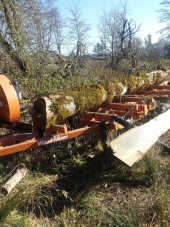

 3
3




Some places need to be wild

 4
4




 4
4




I make a Maple Syrup instructional movie! Check it out HERE
SKIP books, get 'em while they're hot!!! Skills to Inherit Property
See me in a movie building a massive wood staircase:Low Tech Lab Movie










 2
2




Some places need to be wild

 8
8




"Never doubt that a small group of thoughtful, committed citizens can change the world; indeed, it's the only thing that ever has."-Margaret Mead "The only thing worse than being blind, is having sight but no vision."-Helen Keller














Some places need to be wild
 2
2




 1
1




“It’s said war—war never changes. Men do, through the roads they walk. And this road—has reached its end.”














Some places need to be wild

|
What is that? Is that a mongol horde? Can we fend them off with this tiny ad?
Freaky Cheap Heat - 2 hour movie - HD streaming
https://permies.com/wiki/238453/Freaky-Cheap-Heat-hour-movie
|



